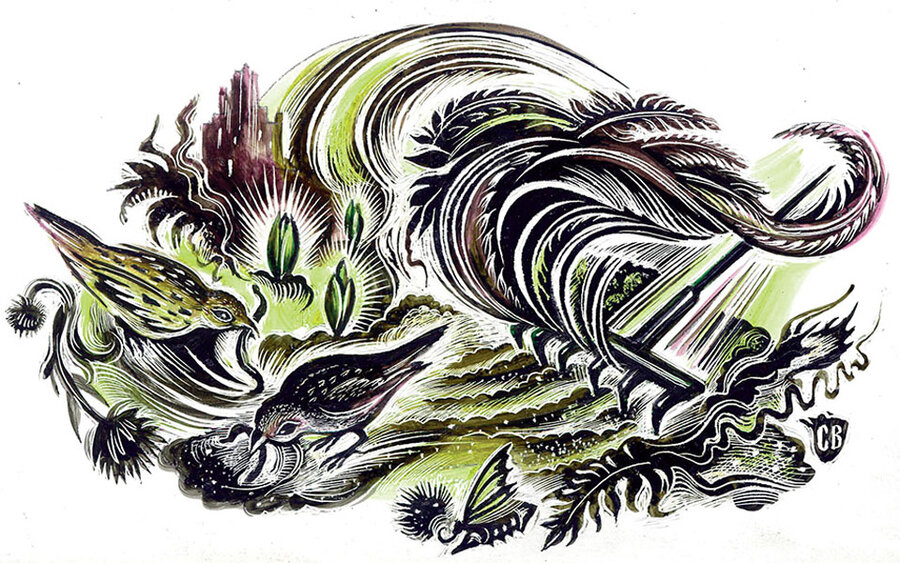Going wild in my garden
Loading...
In midwinter, my garden is, frankly, unkempt. It’s rumpled, brown, and cowlicked, with dead stems poking up every which way. Paths and beds alike have disappeared under a leafy sludge. It’s the kind of aesthetic that could earn you a nuisance complaint in some neighborhoods, but not mine.
It’s a great urban neighborhood, really, full of responsible young people with a sustainability ethic. Around here, leaf blowers are scandalous and artichokes show up in the parking strip. The only drawback is the aroma of fish fertilizer in the springtime, but you get used to that.
Most people have lawns, but they’re not up to subdivision standards, because that requires a lot of poison. Still, folks are tidy. Prevailing autumn winds favor the residents on the west side of the street, but everyone rakes their lawns and composts their leaves or puts them in the cart for recycling.
I used to have a lawn, too. But then I developed a bad nursery jones, and kept coming home with more flowers than I had room for. It started with just a few salvias, but soon enough I was hitting the penstemon family pretty hard. Bit by bit the lawn got carved away until it was no more than a comma in the landscape. So I erased it.
I love to garden, and one of the things I love most about it is not having to do it year-round. With one last burst of industry, I’d get a jump on the winter leisure season by raking up the debris and carting off the dead flower heads and whatnot so that everything looked neat and clean and I could ignore it for a few months.
But it is harder to rake leaves out of flower beds; it requires a daintiness I’m not known for.
One year I got an even larger jump on winter by not bothering to tidy up at all. I felt bad about it at first, as the whole yard slumped into a brown, sodden, lumpy, solid mat, but the next spring, it turned out I could more or less roll up the detritus like fruit leather. And there, underneath, were my neat and orderly beds, plus a posse of daffodils standing at attention like a salute to sunshine.
Meanwhile, birds had been working the place over for months. It was the greatest season ever for birds. They hopped, scuffled, and bobbed around on seedpods, and had themselves a time. A dapper varied thrush even showed up, the first in 30 years, and performed a snappy strut-kick minuet all over the yard.
Varied thrushes, I’ve come to understand, are drawn to brown, sodden, lumpy mats of vegetation, and they scratch it all up looking for morsels: grubs, worms, aspiring butterflies.
I hadn’t really put it together until I read an article on the benefits to wildlife of leaving old stalks and seed heads and leaf clutter in the landscape – on purpose. The morsels are attracted to my lack of effort. The birds are attracted to the morsels. I’m attracted to the birds. Even the soil microbes, I am told, grow ecstatic.
What a garden should look like depends on your perspective, and it pays to have more than one. Here, everybody’s happy. The worms and grubs are in a spa; the birds are at a banquet; and the proprietor is on the Internet, searching for an ecological rationale for ditching housework.





